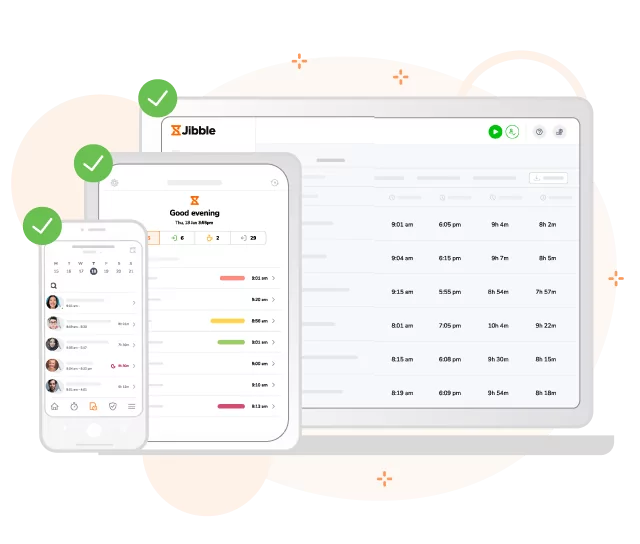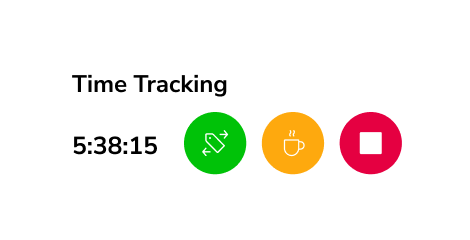
Photo by Free Nomad on Unsplash
Background
A vibrant commune in eastern France, standing out as one of the largest suburbs of its city, with a location that supports a strong local economy.
The town promotes civic engagement and community participation, ensuring social solidarity through various public services, contributing to both environmental sustainability and community well-being.
For confidentiality reasons, the commune name is not disclosed.
The Struggles with the Old System
With the complexities of managing a diverse workforce across public services, the commune faced several challenges with its previous time tracking system, including:
1# Manual Tracking & Inefficiency
The old system was paper-based, leading to errors, delays in timesheet submissions, and difficulty in monitoring employee attendance across different departments. HR and payroll teams spent excessive time manually compiling data, leading to inefficiencies.
2# Lack of Real-Time Visibility
The previous system offered no real-time insights into attendance or leave balances, making it challenging for department heads to plan shifts, handle absenteeism, or make quick decisions based on accurate data.
3# Limited Accessibility for Mobile Workers
Field employees (e.g., public works, parks maintenance) had limited access to the system, resulting in missed clock-ins and inaccuracies in tracking work hours. The lack of a mobile solution made it difficult for workers on the go to log their hours promptly.
The Company’s Key Time Tracking Requirements
When searching for a new time tracking solution, the commune emphasized several key requirements:
- Cost-Effective & Scalable: A budget-friendly solution that could scale with the commune’s growing workforce and avoid excessive per-user costs.
- Multi-device Access: A desktop and mobile-friendly platform that would allow office and field-based employees to clock in and out, regardless of location.
- PTO & Leave Management: A system that could manage employee leave requests efficiently and provide clear visibility into remaining balances.
- Real-Time Insights: The ability to track attendance and employee activity in real time for more efficient resource management.
Why the Company Chose Jibble
Key factors influenced the commune’s decision to adopt Jibble for time tracking:
1# Scalability and Cost-Effectiveness
As the commune continued to grow, Jibble’s pricing structure allowed it to scale with minimal cost increases, making it a sustainable solution for public sector budgeting.
2# Multi-Platform Access
Jibble offered a solution that worked seamlessly across mobile, desktop, and kiosk setups—essential for a workforce split between office staff and field-based employees.
3# Real-Time Tracking & Reporting
The commune appreciated Jibble’s ability to provide real-time attendance data, which improved operational oversight, reduced absenteeism, and allowed for better planning of public services.
4# French Language Availability Across All Platforms
Jibble is fully localized for French-speaking users, with the interface and customer support available in the language across all platforms, ensuring accessibility and ease of use for the commune’s staff.
5# PTO Management
The integrated leave and time-off management system streamlined the process, reducing administrative work for HR and ensuring compliance with labor regulations.
How Was the Onboarding Process?
The commune initially discovered Jibble through research into digital time tracking solutions. After requesting a demo, a Jibble representative provided a comprehensive walkthrough of the platform, highlighting its key features such as multi-device functionality, real-time reporting, automation, and onboarding period lengths. The demo provided clear insights into how the solution could meet the commune’s specific needs, including its diverse workforce.
Guided Onboarding with Expert Support
Following the demo, the commune opted for a structured onboarding process, supported by Jibble’s implementation team. The process included detailed guidance on setting up user roles, configuring department-specific settings, and establishing the necessary channels for efficient communication across teams.
- Setup of Necessary Channels: The implementation team worked closely with the commune to create the required administrative channels, ensuring that time tracking workflows were aligned with the organizational structure. This included setting up department-specific access, user permissions, and data-sharing protocols to meet compliance standards.
- Customized Training: Tailored training sessions were conducted for key stakeholders and department heads. These sessions focused on configuring the system to meet the commune’s unique requirements and how to manage ongoing tasks like leave approvals and timesheet monitoring. Additionally, a user manual was provided for employees, detailing how to use the mobile app, web app, and kiosk mode.
With the guidance provided by Jibble’s team, the commune was able to complete the integration within a planned timeframe. The platform was deployed across all relevant departments, including public works, administration, and community services.
The Benefits Immediately Identified Post-Onboarding
Immediately after implementing Jibble, the commune experienced the following improvements:
1. Accurate Attendance Tracking: Employees could now track their time directly from their mobile devices or kiosks, reducing errors.
2. Greater Accountability: Real-time visibility into employees’ hours, coupled with self-managed timesheets, promoted transparency and ownership.
3. Streamlined Leave Requests: The easy way to track leave balances and request approvals in one place. simplified the process for both employees and HR.
4. Efficient Reporting: Jibble’s real-time reports offered instant insights into attendance patterns, improving scheduling and planning across departments.
Main Method of Jibbling In and Out
The commune utilized Jibble across various platforms, with staff primarily using the following methods to clock in and out:
- Web and Desktop App: Office staff accessed the platform via Jibble web app and desktop time tracker to log their time and monitor attendance.
- Kiosk Mode: Employees at larger municipal buildings used the kiosk setup for efficient clocking in and out.
- Mobile App: Field employees (e.g., maintenance workers, sanitation staff) used Jibble’s GPS-enabled mobile app to clock in and out from job sites.
Conclusion
Adopting Jibble has offered the commune a replacement to its outdated, manual time tracking system with a modern, scalable solution. The introduction of mobile clock-ins, automated leave management, and real-time reporting enhanced both accountability and efficiency across various public services.
The onboarding process was executed with structured guidance from Jibble’s implementation team. This included customized training, configuration support, and the setup of necessary administrative channels to ensure seamless integration across departments.
For a local government managing a diverse workforce across multiple departments, Jibble provided an affordable and reliable solution that met both current and future needs.



